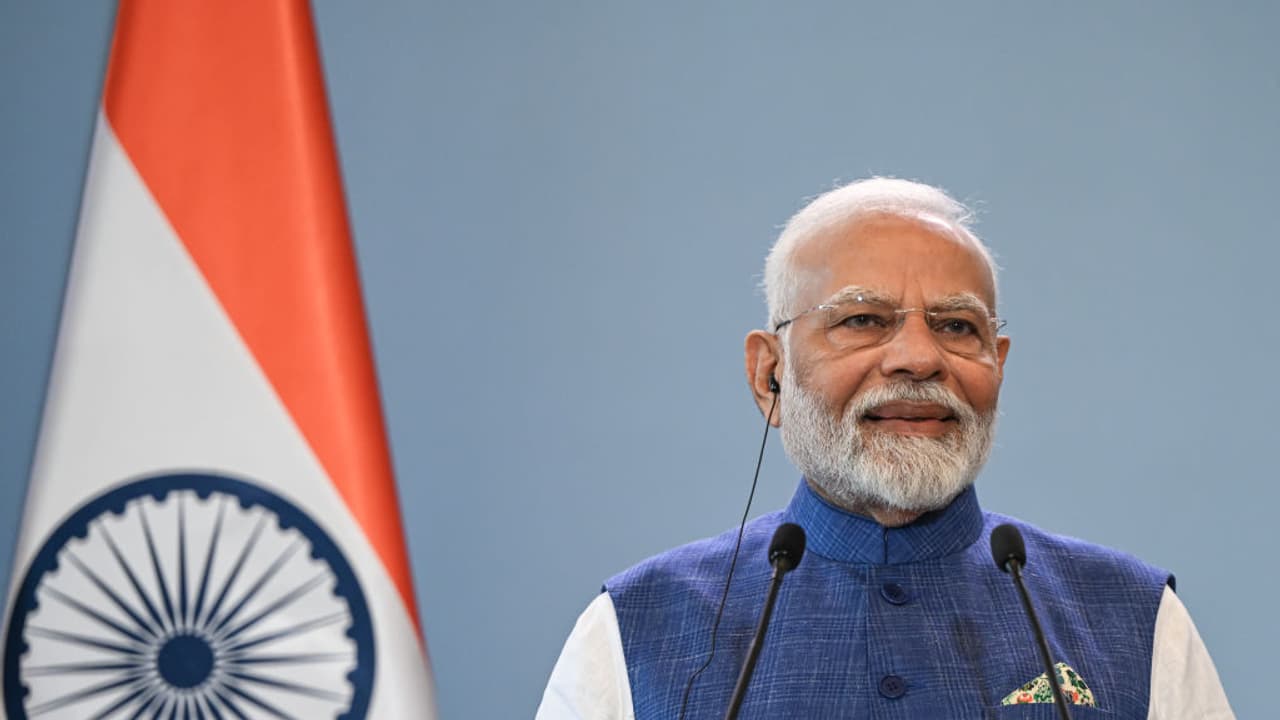Under PM Modi, India has seen a decade of rapid transformation, achieving record GDP growth, rising investments, increased household savings, digital empowerment and food security, marking a confident stride toward becoming developed nation by 2047.
By Pratyush Kanth, National Spokesperson, BJP:

As India strides confidently into its Amrit Kaal, the decade under Prime Minister Narendra Modi’s leadership is emerging as a defining era in our nation’s modern history one that has transformed India from a fragile economy into a global growth engine. The recently released economic indicators for FY 2024-25 reaffirm what the world is increasingly acknowledging: India’s economic journey is not only sustainable, it is unstoppable.
In the final quarter of FY25, India registered a strong 7.4% growth in Real GDP and an impressive 10.8% in Nominal GDP. This performance isn’t a flash in the pan, it’s a reflection of resilient domestic demand, thriving private investment, and a thriving manufacturing and services sector. Even amidst global volatility, the Indian economy continues to be a beacon of stability and growth. This is no accident, it is the result of sustained structural reforms, fiscal prudence, and the political will to make tough but necessary decisions.
The Modi Government’s commitment to sound financial management was clearly demonstrated by bringing down the fiscal deficit to 4.77% of GDP in FY25, a feat few major economies can match today. This delicate balance between promoting growth and maintaining fiscal responsibility underscores the maturity of economic governance that India has achieved.
The Goods and Services Tax (GST), a landmark reform of the Modi era, is now bearing rich fruit. In May 2025, GST collections surged to a record ₹2.01 lakh crore a 16.4% year-on-year increase. This robust performance reflects growing formalisation, better compliance, and the digital transformation of India’s economy. The Modi Government’s efforts to curb the black economy and expand the tax base are paying off handsomely.
When it comes to foreign investment, India under PM Modi has emerged as a preferred global destination. Foreign Direct Investment (FDI) has surged from $36 billion in FY 2013–14 to a provisional $81 billion in FY 2024-25, a 14% increase over the previous year. These numbers are more than statistics; they are a vote of global confidence in New India.
Similarly, Foreign Portfolio Investors (FPIs), who were net sellers in the early part of FY25, made a dramatic turnaround by investing ₹19,860 crore in May, the highest in eight months. This reaffirms international confidence in India’s macroeconomic fundamentals and long-term growth trajectory.
Even at the household level, the story is changing for the better. SBI’s latest economic research suggests that net financial savings of Indian households may touch ₹22 lakh crore this year, which is 6.5% of the Gross National Disposable Income. This rise in savings reflects the increasing financial literacy and economic stability of Indian families nurtured by targeted schemes, robust banking access, and inflation control.
One of the most remarkable and perhaps under-discussed aspects of India’s transformation under PM Modi is the rise of digital inclusion, especially among women. A recent survey by the Ministry of Statistics shows that the number of rural women capable of conducting online banking has nearly doubled in just two years from 17.1% to 30%. Among young rural women (aged 15–24), the leap is even more extraordinary, from 19.6% to 51.4%. This is the Digital India revolution at work, empowering not just citizens, but changing lives — one smartphone, one transaction at a time.
On the strategic front, India’s defence production has reached an all-time high of ₹1.46 lakh crore in FY25, nearly 15% higher than the previous year. The ‘Make in India’ push in the defence sector is making India not just self-reliant but also a potential global exporter of military hardware. This is economic transformation with strategic depth.
Agriculture, the backbone of India, has received a consistent boost under the Modi Government. A landmark hike in Minimum Support Prices (MSPs) for Kharif crops in the 2025-26 marketing season ensures that our farmers get fair and remunerative prices. Nigerseed, ragi, cotton, and sesamum have seen the highest hikes reaffirming our Government’s resolve to uplift every annadata of the nation.
And the results are showing. India’s foodgrain production has touched a record 353.2 million tonnes, a 6% rise from last year. With rice and wheat production growing significantly, India is now set to become the world’s largest rice producer, surpassing even China. This is the strength of our soil, our farmers, and our governance coming together.
What India is witnessing today is a transformation powered by vision, execution, and a people-first approach. Prime Minister Narendra Modi has not only promised change, he has delivered it, across every sector, across every state. Whether it is economic stability, digital empowerment, agricultural reform, infrastructure growth, or women’s empowerment, New India is rising.
As a proud spokesperson of the Bharatiya Janata Party, I can say this with complete conviction: this is not just a phase of growth, this is a revolution of aspiration. The Modi Government’s mission of making India a developed nation by 2047 Viksit Bharat@100 is no longer a distant dream. It is a destination we are fast approaching, with the wind of reform, the engine of growth, and the will of 1.4 billion Indians behind us.
India is rising and it is doing so because of strong leadership, clear vision, and an unshakable commitment to the people.
Disclaimer: The opinions expressed are solely those of the author and do not reflect the views or stance of the organization. The organization assumes no responsibility for the content shared.
